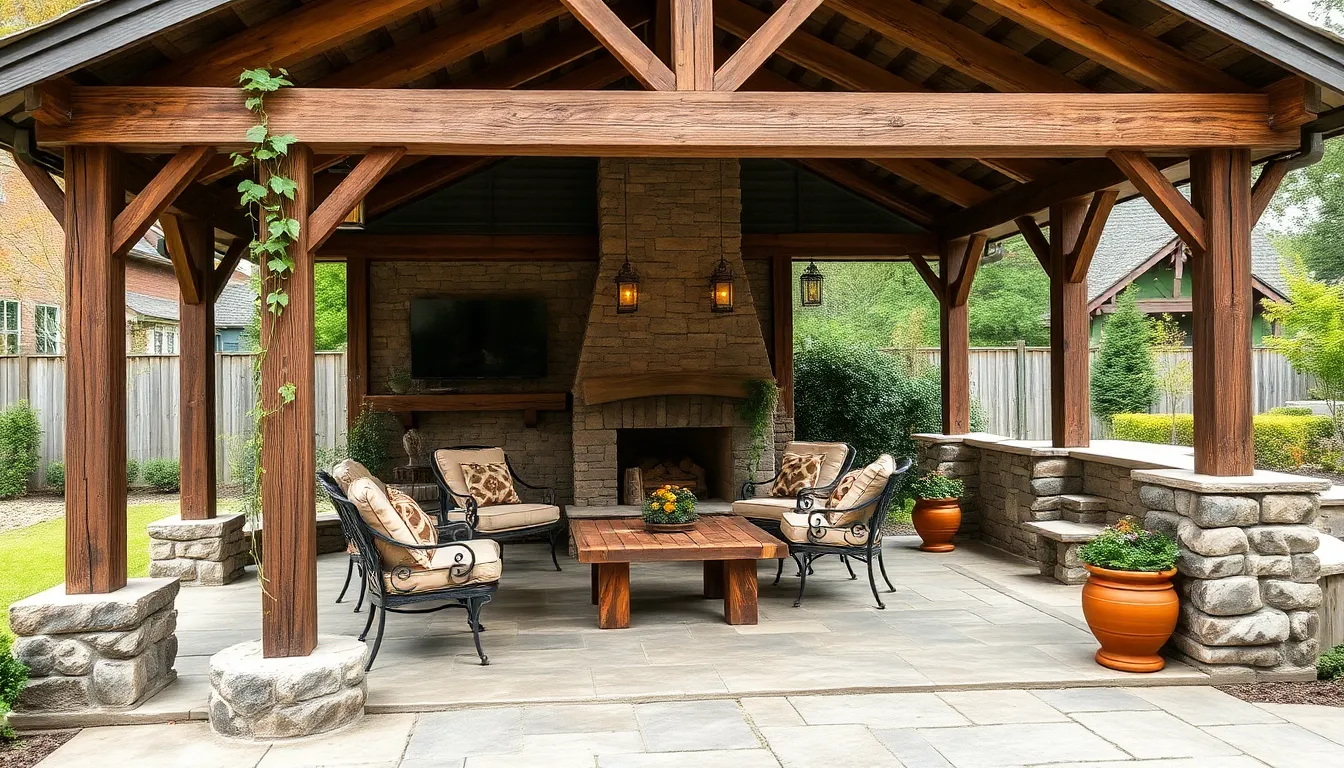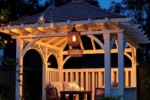Transforming your garden into a charming rustic retreat is a rewarding adventure for both novice and seasoned outdoor enthusiasts. Whether you’re just starting out or looking to elevate your backyard, these rustic outdoor shelter ideas offer inspiring, practical solutions that blend natural beauty with functional comfort.
Discover how simple structures can create cozy nooks, provide shelter from the elements, and enhance the overall appeal of your outdoor space. With easy-to-follow tips and creative designs, you’ll gain the confidence to craft a welcoming haven that invites relaxation and memorable moments year-round.
Use Reclaimed Wood for Framework
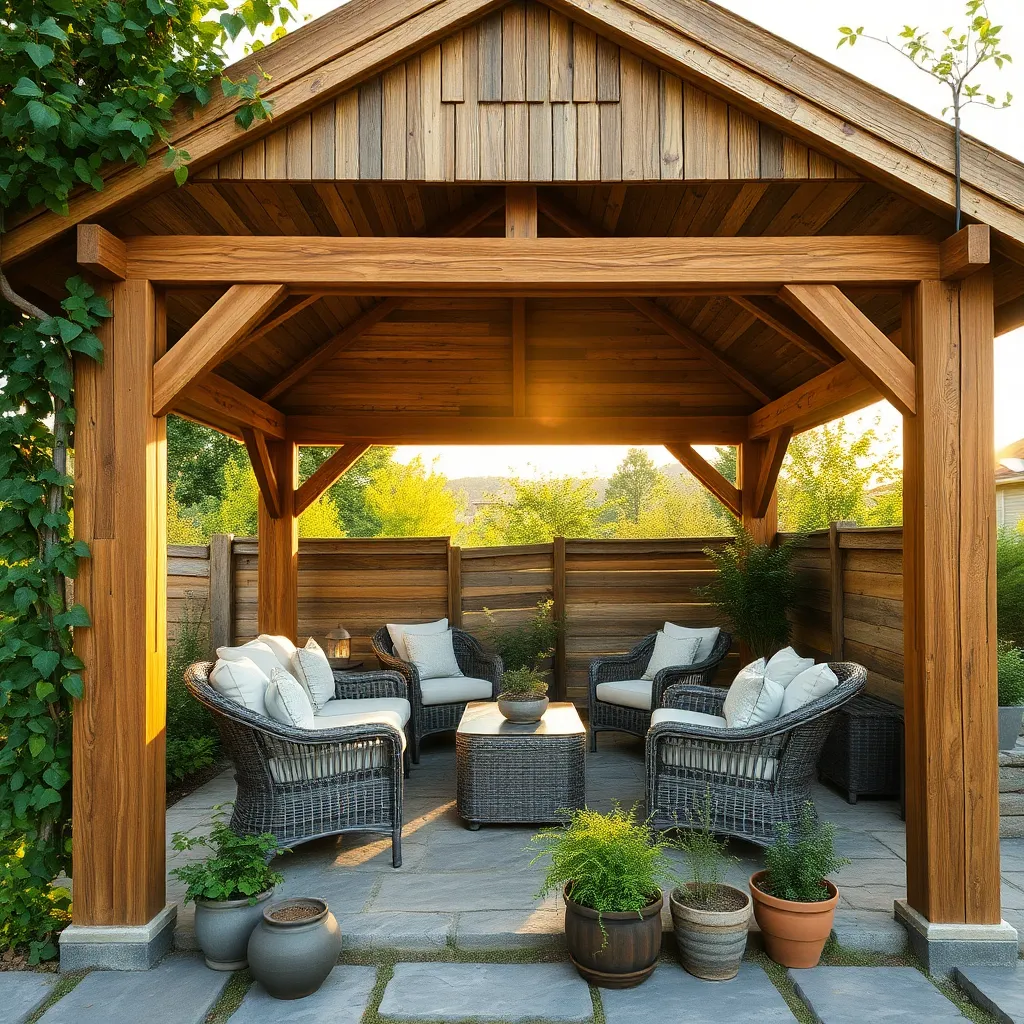
Using reclaimed wood for your outdoor shelter’s framework adds a charming rustic touch while being eco-friendly and budget-conscious. Start by sourcing sturdy boards from old barns, pallets, or weathered fencing, ensuring the wood is free from rot and pests. For structural integrity, select pieces at least 2×4 inches in thickness, and consider treating the wood with a natural sealant to protect against moisture and insects.
When building your framework, focus on simple yet strong joinery techniques like lap joints or metal brackets to enhance stability without requiring advanced carpentry. For a visually appealing design, incorporate uneven textures and natural knots, which highlight the reclaimed wood’s character. To finish, sand any rough edges and apply a clear matte finish to preserve the rustic look while extending the wood’s lifespan outdoors.
Incorporate Natural Stone Flooring
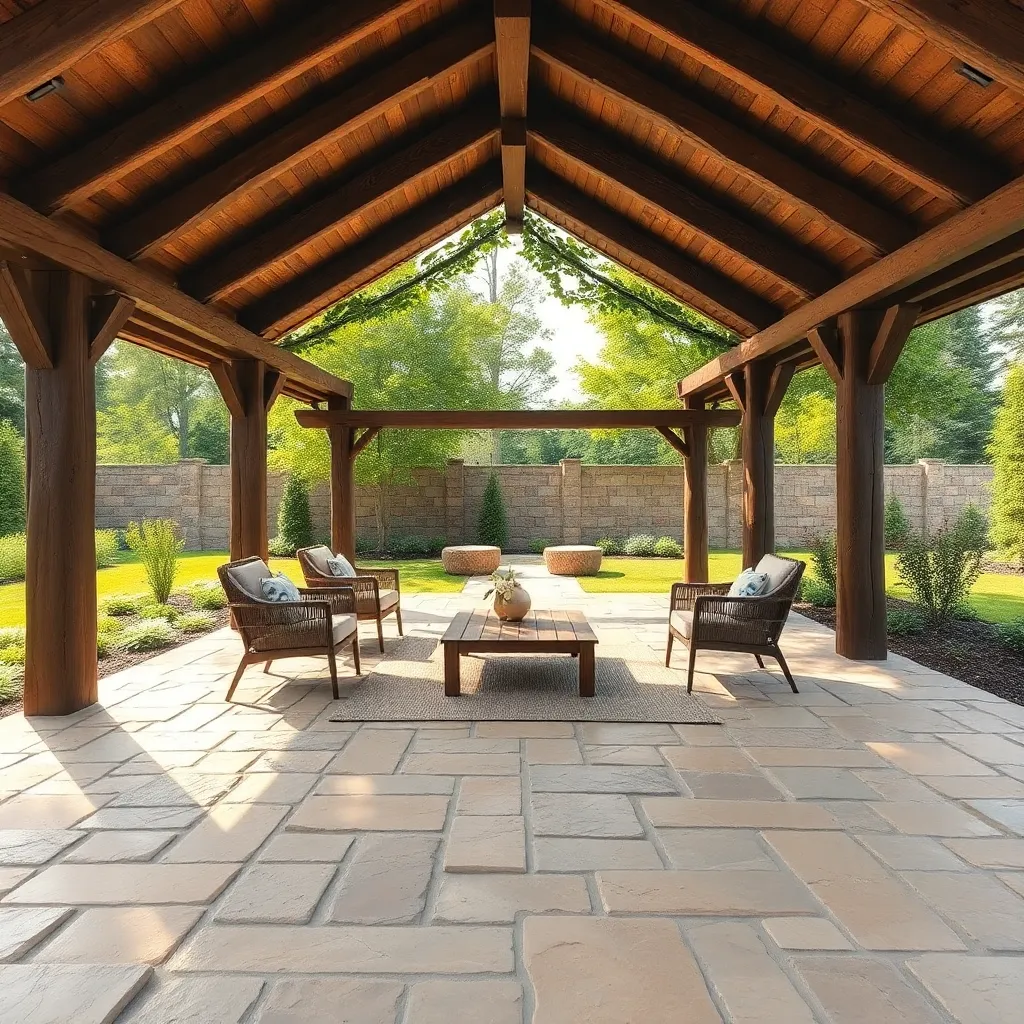
Natural stone flooring adds timeless beauty and durability to your rustic outdoor shelter. Choose stones like flagstone, slate, or limestone, which offer varied textures and earthy tones to complement reclaimed wood frameworks. For installation, lay a compacted gravel base first for drainage, then set stones with mortar or sand between them to prevent shifting and weeds.
To enhance both safety and aesthetics, keep stone slabs between 12 to 18 inches wide for comfortable walking and easy maintenance. For advanced durability, seal the surface with a breathable stone sealer to protect against weathering without trapping moisture. Incorporate subtle slopes to guide rainwater away, ensuring your shelter’s flooring stays functional and inviting year-round.
Build a Thatched Roof Covering
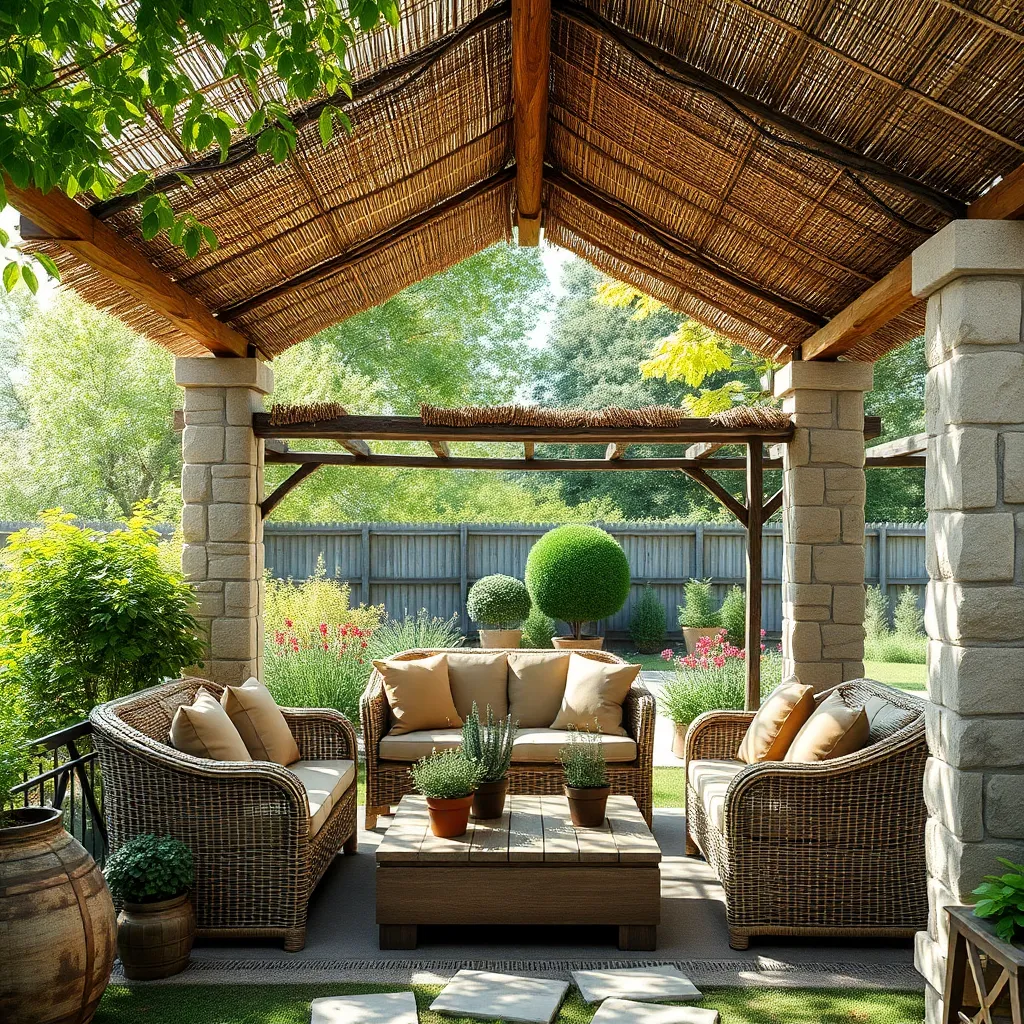
Creating a thatched roof covering adds an authentic, rustic charm while providing excellent natural insulation and water resistance. Start by constructing a sturdy wooden frame with a steep pitch of at least 45 degrees to ensure efficient water runoff. Use durable, weather-resistant wood like cedar or oak for the frame, and layer natural thatching materials such as water reed, straw, or palm leaves tightly, securing them with galvanized wire or synthetic twine for longevity.
For best results, apply the thatch in bundles about 12-18 inches thick, overlapping each row from bottom to top to prevent leaks. Beginners should consider consulting local experts or sourcing pre-prepared thatch bundles to simplify installation. Advanced gardeners can enhance durability by installing a breathable underlay beneath the thatch to improve moisture management and extend the roof’s lifespan, making your garden shelter both beautiful and functional.
Add Vintage Lantern Lighting
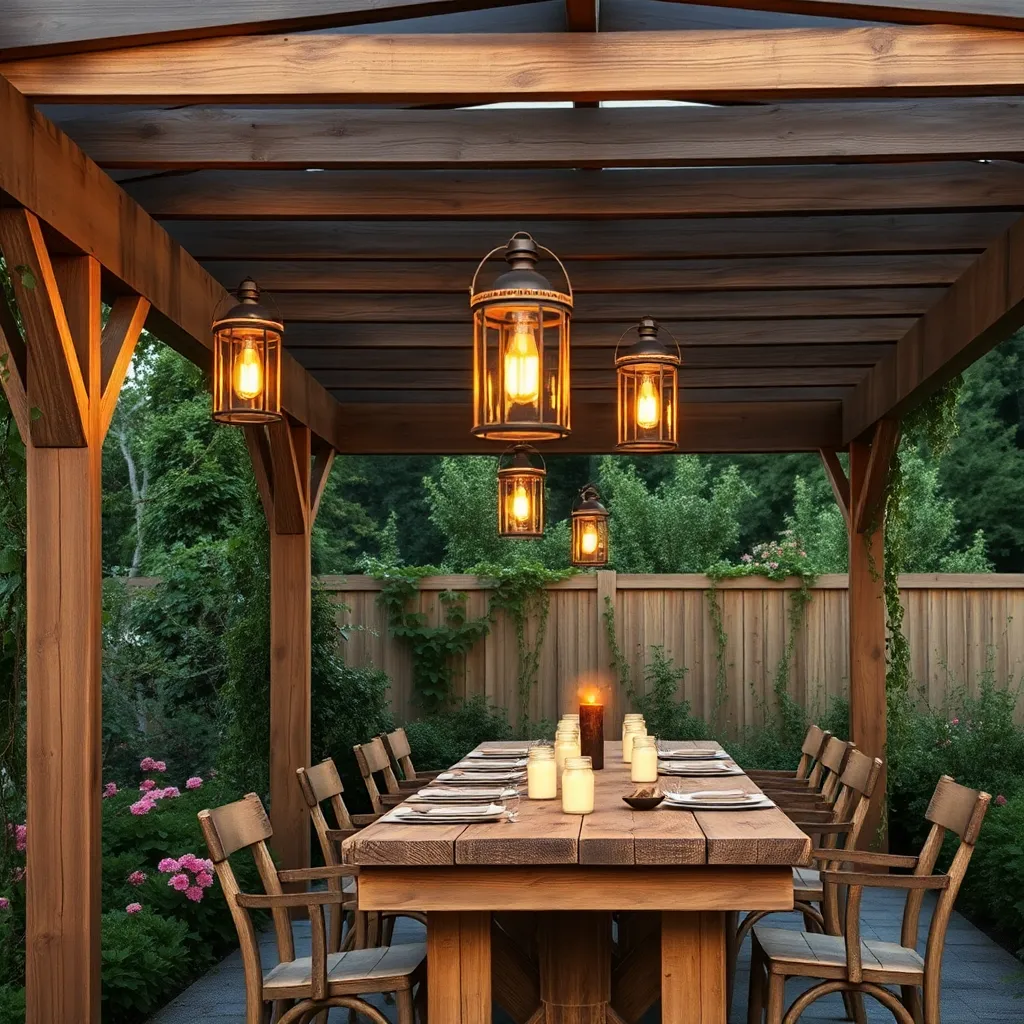
Incorporating vintage lantern lighting into your rustic outdoor shelter instantly enhances its charm and usability. Opt for lanterns made from weather-resistant materials like galvanized steel or copper with clear glass panels to ensure durability. For ease of installation, choose lanterns with hooks or brackets that can be securely fastened to wooden beams or posts, and use LED bulbs designed to mimic candlelight for a warm, inviting glow without the fire hazard.
To elevate your design, consider stringing multiple lanterns along the perimeter or hanging them at varying heights to create depth and ambiance. For advanced gardeners, integrating solar-powered or low-voltage wiring systems helps minimize maintenance and energy costs. Don’t forget to regularly clean glass panes and check wiring or batteries, ensuring your vintage lighting remains both beautiful and functional throughout every season.
Plant Climbing Vines Around Structure
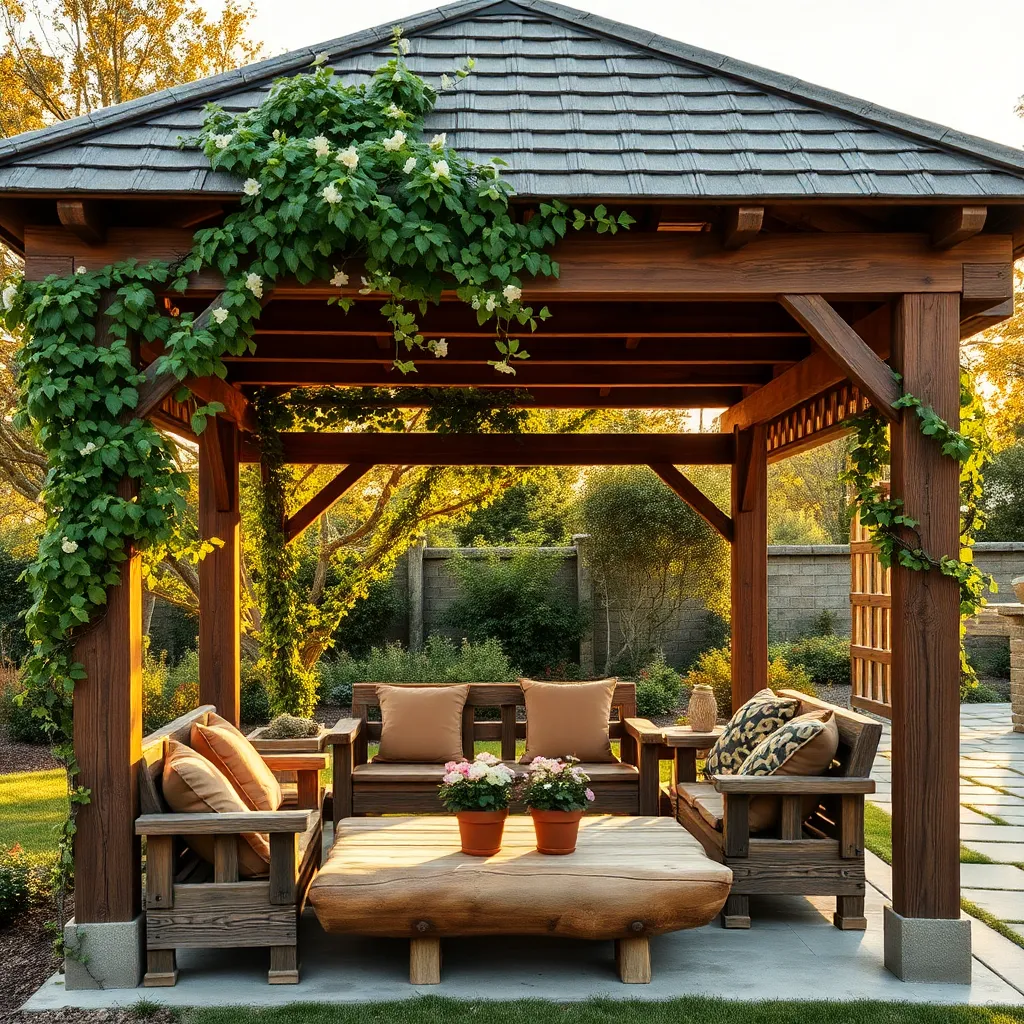
Enhance your rustic outdoor shelter by planting climbing vines such as clematis, honeysuckle, or climbing roses around its frame. Use sturdy materials like galvanized wire, wooden lattice panels, or metal trellises attached securely to posts or beams to support vigorous growth. For beginners, start with a spacing of about 12 to 18 inches between plants to allow healthy development without overcrowding.
To maximize both beauty and durability, regularly train vines by gently tying stems to supports with soft garden ties and pruning excess growth to maintain shape. Advanced gardeners can incorporate vertical espalier techniques or mixed vine varieties for layered textures and seasonal interest. Remember to choose plants suited to your climate and shelter exposure to ensure thriving greenery year-round.
Conclusion: Creating Beautiful Outdoor Spaces
Creating a cozy rustic outdoor shelter in your garden is more than just a design project—it’s an opportunity to nurture connection, communication, and shared joy with your loved ones. We explored five key relationship concepts intertwined with these shelter ideas: fostering togetherness through inviting spaces, encouraging open dialogue in natural settings, creating rituals around outdoor gatherings, embracing teamwork in building and maintaining your shelter, and cultivating a peaceful retreat for reflection and bonding. To take action today, start by sketching a simple shelter design that invites your partner or family to join you in the process—turning your garden into a shared haven. Be sure to save or bookmark this article so you can revisit these inspiring ideas whenever you need a fresh boost of connection or creative spark. Remember, the most enduring relationships grow when you create intentional spaces that support love and communication. With a little effort and heart, your rustic garden shelter can become the cornerstone of many cherished moments ahead. You have the power to transform your garden—and your relationships—one thoughtful step at a time.

